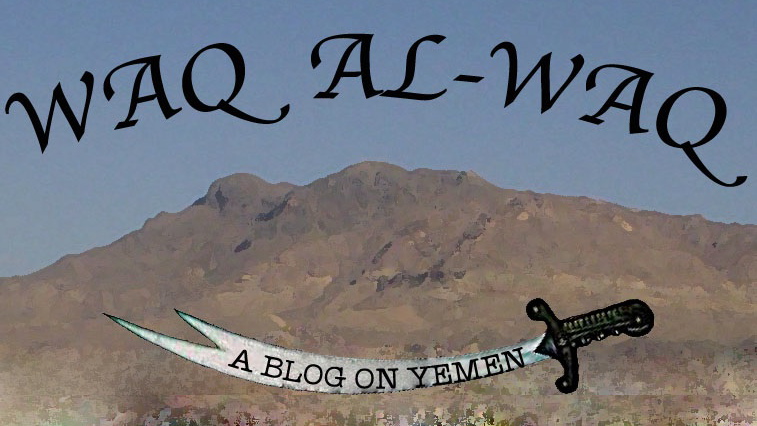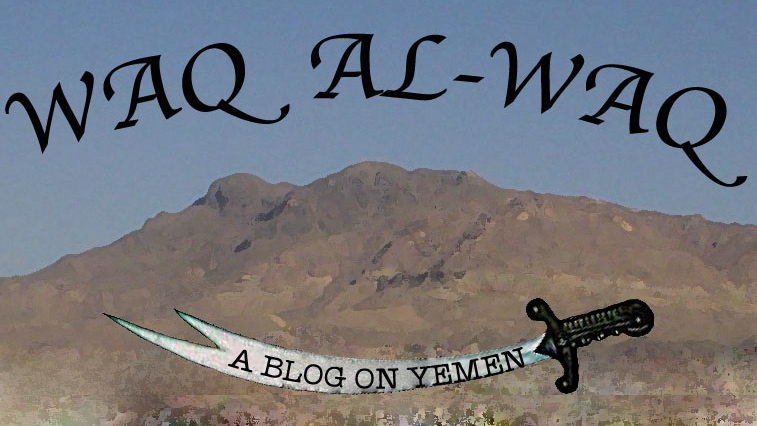The Sixth War in Sa’dah
As most of our readers know, the long-expected sixth Sa’dah war has been going on for the past few weeks. I was in Yemen when it started and spent some time talking with several people both in and out of the country since it started.
In trying to make sense of the conflict, I have asked myself several questions. One of the first questions, which has also been a lingering one, centers on timing. A pre-Ramadan offensive was excepted for several days in San’a, at least in certain circles, before the fighting actually started.
My early thoughts – it is just as dangerous as it is tempting to spout off on issues that are still unfolding – is that the government is attempting to strike hard against the Huthis in an attempt to bring them to their news and force them to negotiate from a position of weakness. I don’t believe there is a military solution to this conflict. That is, I don’t think the Yemeni government can make this problem go away by killing people and destroying things in and around Sa’dah.
But at the same time a tough government campaign in Sa’dah is something that is being watched quite closely by members of the Southern Movement. I have long argued, as many already know, that in my view there is a hierarchy of security crises in Yemen with the threat of Southern secession foremost in the government’s mind followed by the threat from the Huthis and then al-Qaeda.
The government is using the war in the north as a not so subtle and not so coded message to the South, essentially saying: this is what the endgame looks like if you continue on the path that you are on. There are certain red lines that the Yemeni government has and as it feels itself pushed more and more it is reacting, but instead of lashing out against the Southern movement it is sending a loud and deadly warning shot across the bow.
This then allows the Yemeni government to both warn the Southern Movement and hopefully (at least in the government’s calculation dissuade them from more serious demonstrations and violence) while at the same time cracking down on the Huthis, who have gained a bit too much power and too many positions since the July 17, 2008 cease fire was announced.
I have my doubts as to the potential for success of such a strategy, but that is a rough sketch of what I see the government attempting to do at the moment.
Given the recent up-tick in fighting and general confusion about what is actually going on in Sa’dah there have been a number of recent media reports on the conflict. (I was on the BBC on Sunday talking a bit about it – but this sort of interest ebbs and flows) Hamida Ghafour wrote this profile of ‘Abd al-Malik al-Huthi in the National in which she claims that there are “two narratives” about the man, but the “truth seems as elusive as the man himself.”
Personally, I don’t think either scenario that she lays out is correct. (Full disclosure: she attempted to talk with me a couple of different times for the profile but we were unable to connect.) I see ‘Abd al-Malik as someone who is a member of a family that has gotten caught up in a war that has an evolving logic all its own, and is loyal to his family first and at the moment what it means to be a Huthi at the moment is to be someone who is in conflict with the government and that is what he is doing. I don’t see him as either a “west-hating terrorist” or a “charismatic hero.” Instead he is a member of a family who is discharging his familial responsibilities as best he can at the moment. He is not without a clear cause, it is just a cause that is wrapped up in years of domestic disputes.
The Huthis see themselves as a community under attack, and this understanding has largely influenced the group’s decision to engage in violence against the Yemeni government and its Salafi allies as well as against the different tribal and paramilitary forces that have been brought into the fighting. In 1995, Bernard Haykel identified the roots of the conflict, writing: “The main issue of concern in all of these works was the preservation of the Zaydi-Yemeni heritage from extinction because of the onslaught of a proselytizing Wahhabi movement in such traditional Zaydi provinces as Sa‘dah and the Jawf combined with neglect and opposition to Zaydi concerns and issues by the government in San‘a.”
These historical grievances and anxieties over extinction have evolved as the conflict has expanded and mutated since it began in 2004. Initially, Husayn Badr al-Din al-Huthi was wary of expressing opposition to President Salih, directing his anger against the more nebulous government, which is a common practice in Yemen. More recently, however, Yahya al-Huthi, who is currently in exile in Germany, expressed an open desire for the “demise of Ali Abdullah Salih’s regime.”
Undoubtedly, the Huthis have used religious rhetoric, particularly the loaded term khuruj, which in the Zaydi context refers to an uprising against an unjust ruler, to talk about the conflict in Sa‘dah. This is more a case of theology being manipulated to fit politics than it is theology driving politics. Badr al-Din al-Huthi and other Zaydi scholars balked at signing Hizb al-Haqq’s charter, which suggested that the office of the imamate was an historical artifact that had no place in contemporary Yemeni society. But even these ideological purists went no further. They did not voice any opposition to the regime or to the office of the president.
It was only after the fighting started in 2004, that Zaydi theology was grafted onto the conflict to justify the latter stages of the war. Even after the death of Husayn, his father Badr al-Din al-Huthi refused to say that President Salih was an illegitimate ruler.
The protracted nature of the war has also led to evolving justifications for the continuation of the conflict. The war has spread well beyond the core group of Zaydi and Hashimi purists who supported Husayn al-Huthi in 2004 to include a number of different tribesmen, who are responding to government destruction of crops, land and homes. Much of this destruction was presumably unintentional, but government shelling throughout the war has often been indiscriminate. This means that what was once a three-sided conflict between the government its Salafi allies and the Huthis has become much more complex.
Now, tribesmen and other interest groups have been brought into the fighting on the side of the Huthis not out of any adherence to Zaydi theology or doctrine but rather as a response to government overreaching and military mistakes. In effect, after five rounds of fighting, the government’s various military campaigns have created more enemies than it had when the conflict began.
It should also be noted that the government does not appear to have great intelligence on what is going on within the ranks of the Huthis. It recently put out a list of 55 individuals it wanted to arrest. Topping the list is Badr al-Din al-Huthi, the patriarch of the clan, whom no one has heard from since his 2005 interview with al-Wasat (which incidentally should be read by anyone hoping to understand the conflict). Many people assume he died in 2006, but the government has been unable to confirm this.




